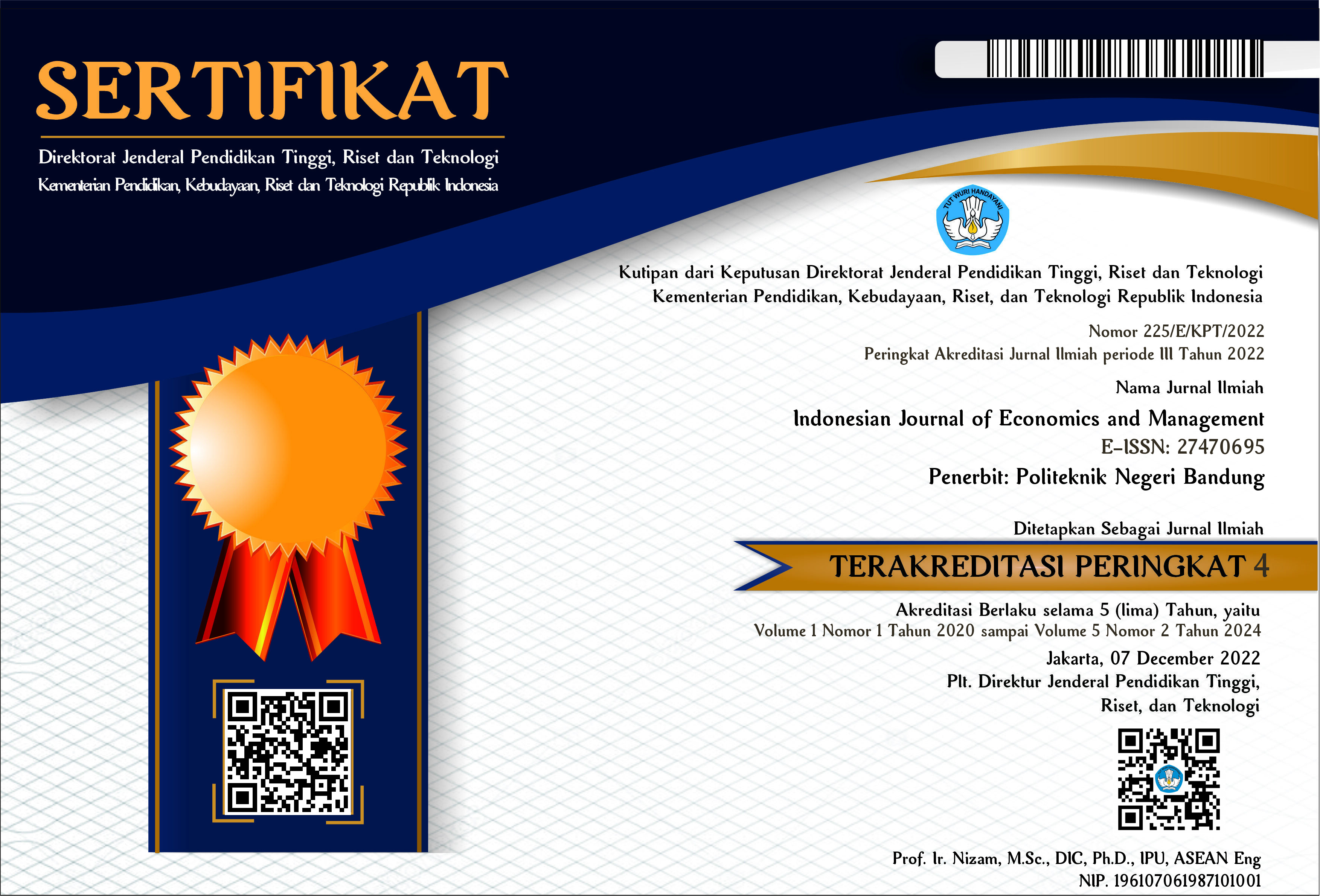Digital Literacy Mediation In Balikpapan Micro And Small Industries' Business Performance
Abstract
Productivity gaps between large companies and micro and small industries are due to gaps in technology adoption, access to funding and managerial practices. Moving the capital to East Kalimantan is a momentum for micro and small industry players to encourage economic productivity growth in the buffer zone of the Capital City of the Nusantara (IKN). Community-based cluster development can minimize weaknesses, especially in the use of technology and information systems. This study investigates the effect of digital experience on business performance with digital literacy as a mediating variable. This research takes a sample of micro and small industries in Balikpapan City as one of the buffer cities of IKN. The subjects are food processing industry players in the Somber Small Industry Center area. Quantitative research uses structural-partial least square (SEM-PLS) modeling with WarpPLS 8.0 analysis tool. Hypothesis testing results show that digital experience and digital literacy partially have a direct and significant effect on business performance. Digital literacy significantly mediates the relationship between digital experience and business performance of micro and small businesses in Balikapapan City.



